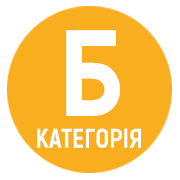The effect of (Mg, Co) bis (citrate) germanates on morphological changes in brain tissue
DOI:
https://doi.org/10.32782/2415-8127.2022.66.30Keywords:
coordination compounds of germanium, subacute toxicity, morphological changes.Abstract
Introduction. The problem of safety of pharmacotherapy is becoming more and more urgent all over the world. This is primarily due to the increase in the number of medicines and their widespread use. The use of pharmacotherapeutic agents is usually accompanied by the occurrence of adverse reactions, which differ in their manifestations and degree of severity. Safe use of medicines is one of the priority tasks of modern health care. Therefore, when studying new biologically active substances – future medicines, special attention is paid to information about their toxicity. The search for new effective and safe medicines is a rather complex and long process. One of the well-known ways of searching is based on the detection of biologically active substances (BAS) involved in life processes, pathophysiological and pathochemical processes that underlie the pathogenesis of various diseases. Guided by these principles under the leadership of Professor Seyfullina I.Y. at the Department of Inorganic Chemistry and Chemical Education of Odesa National University named after I.I. Mechnikov, a number of biologically active substances were synthesized – coordination compounds based on germanium, vitamins, microelements, and organic acids acted as bioligands. Purposefully synthesized: magnesium bis(citrato)germanate – hermacite, cobalt bis(citrato)germanate – hercocite. The acute toxicity of BAR was studied: magnesium bis (citrato) germanate LD50= (3049.55±42.54) mg/kg of rat weight, cobalt bis (citrato) germanate LD50= (185.00±4.23) mg/kg. The aim of the work was to study the morphological changes in the brain tissue of rats after administration of (Mg, Co) bis (citrate) germanates in subacute and subchronic experiments. Research methodology and methods. An experimental study was conducted on sexually mature male Wistar rats weighing 180-250 g, which were injected intraperitoneally with (Mg, Co) bis (citrate) germanates in doses of 1/40, 1/110 and 1 /135 LD50. At the same time, it was previously proven that the main pharmacological properties of the compound were manifested by doses of 1/110 and 1/135 LD50. After decapitation, macro- and microscopic examination of the brain tissue was carried out. When conducting the experiment, the general principles of the European Convention for the Protection of Vertebrate Animals, Directive 2010/63/EU of the European Parliament and the Council of the European Union dated September 21, 2010 on the protection of animals used for scientific purposes were observed. Research results and their discussion. The introduction of coordination compounds of metals for 28 days at a dose of 1/40 LD50 caused the appearance of perivascular and pericellular edema in the tissue of the brain, which was more pronounced for the cobalt-containing compound. Administration of hermacyt in doses of 1/40 LD50 for 3 months led to the appearance of areas of necrotized brain tissue, and administration of hercocyte led to the appearance of areas of destruction of brain tissue with the formation of small cavities. Administration of BAR in doses of 1/110 LD50 for 28 days and 3 months was accompanied by minor morphological changes (moderately expressed perivascular and pericellular edema). When BAR was used in doses of 1/135 LD50, the tissue of the brain of rats had minor changes (fullness of individual vessels of the microcirculatory channel, around which there is moderate edema). Conclusions. Thus, new multimetallic coordination compounds (Mg, Co) bis(citrate) germanate in effective doses in subacute and subchronic experiments did not show toxic effects on brain tissues and are promising for further study and establishment of pharmacological properties.
References
Belenichev IF, Gorchakova NO, Bukhtiyarova NV, Samura IB, Bukhtiarova TA, Nagorna OO et al. Side effects of drugs: a textbook for students of higher medical institutions. Zaporizhzhia State Medical University. Vinnytsia: Nova Kniga, 2021. 355 p. (In Ukrainian).
Patient Safety. Making health care safer. Geneva: World Health Organization. 2017. 20 р. URL: https://apps.who.int/iris/ bitstream/handle/ 10665/255507/WHO-HIS-SDS-2017.11-eng.pdf?sequ-ence=1&isAllowed=y.
Vsemirnaja organizacija zdravoohranenija: 10 faktov o bezopasnosti pa-cientov. URL: https:// www.who.int/features/ factfiles/patient_safety/ru/ (data zvernennja: 06.05.2020). 10 p.
Shyrykyna MV, Obolonskaia OYu, Lynnyk VA, Deev VV. The current state of the problem of side effects of drugs in medicine. Dermatovenerolohyia. Kosmetolohyia. Seksopatolohyia. 2016;1-4:275-283. (in Russian).
Balon YaG, Samson OYa, Simurov OV, Tronko MD. Endocrinology: passing today for new directions. International Journal of Endocrinology. 2013; 7(55); 109-117.
Holovko YuS, Yvashkevych OA, Holovko AS. Modern methods of searching for new drugs. Vestnyk BHU. 2012; 1(2):7-15. (In Ukrainian). 7. Dyzain i syntez molekuliarnykh kompleksiv ta kompleksonativ hermaniiu(IV) z shyrokym spektrom farmakolohichnoi dii. [Macro microelements (exchange, pathology and methods of value): monograph]. Pohorielov MV, Bumeister VI, Tkach HF et al. Sumi: SumDU; 2010. 147 p. (In Ukrainian).
Martsynko OE, Seifullina II. Dyzain i syntez molekuliarnykh kompleksiv ta kompleksonativ hermaniiu(IV) z shyrokym spektrom farmakolohichnoi dii. [Design and synthesis of molecular complexes and complexonates in germanium (IV) with a wide range of pharmacological activities]. Odesa: «Odeskyi natsionalnyi universytet imeni I.I. Mechnykova»; 2018. 144 p. (In Ukrainian).
Matiushkyna MV. Acute toxicity of a new coordination compound of germanium and magnesium with citric acid. Farmatsyia. 2015;1:40–42. (in Russian).
Hodovan VV, Matiushkina MV, Vastianov RS. Nootropic effects of metal (Mg, Co) biscitratogermanates (stanat). Zaporozhskyi medytsynskyi zhurnal. 2014; 5 (86):41–46. (In Ukrainian).
Hodovan VV, Matiushkina MV. Modulation of generalized convulsive activity under the influence of new coordination compounds of germanium, tin and magnesium. Visnyk Vinnytskoho natsionalnoho medychnoho universytetu. 2014; 2(18):359–362. (In Ukrainian).
Matiushkina MV. Influence of various metal (Mg, Co) bis (citrate) germanates (stanates) on changes in muscle tone. Farmatsevtychnyi chasopys. 2014;4 (32):24-29. (In Ukrainian).
Matiushkina MV. Influence of various metal (Mg, Co) bis (citrate) germanates (stanates) on the severity of aggressive and conflicting behavior. Ukrainskyi biofarmatsevtychnyi zhurnal. 2015;2:24–29. (In Ukrainian).
Doklinichni doslidzhennia likarskykh zasobiv: [metodychni rekomendatsii]. Preclinical studies of drugs: [guidelines] / Stefanov OV. K. : Avitsena; 2001. 527 p. (In Ukrainian).
General cytology and histology: a textbook. Dzerzhynskyi ME, Skrypnyk N V, Ostrovska GV and others. ; under the editorship M.E. Dzerzhynskyi; edited by Skrypnyk NV. K.: Kyiv University Publishing and Printing Center, 2010. 575 p. (In Ukrainian).
Vareniuk IM, Dzerzhynskyi ME. Methods of cyto-histological diagnostics: a study guide. Kyiv: Interservice, 2019. 256 p. (In Ukrainian).






